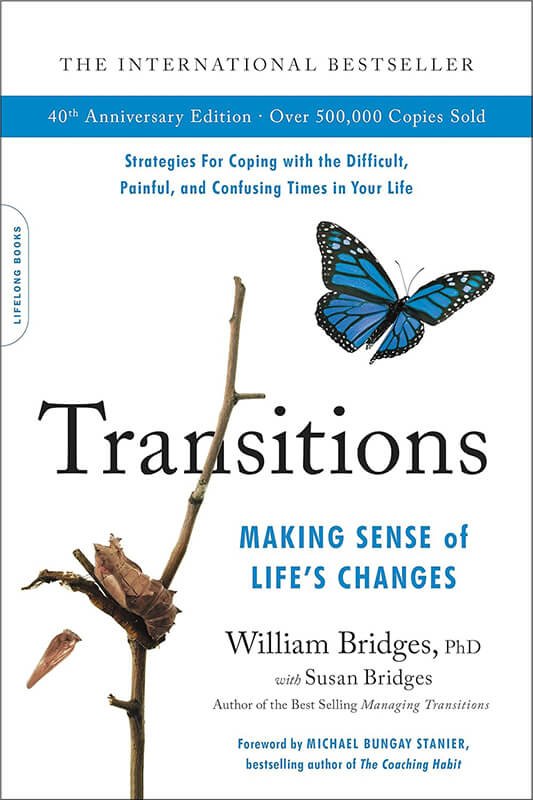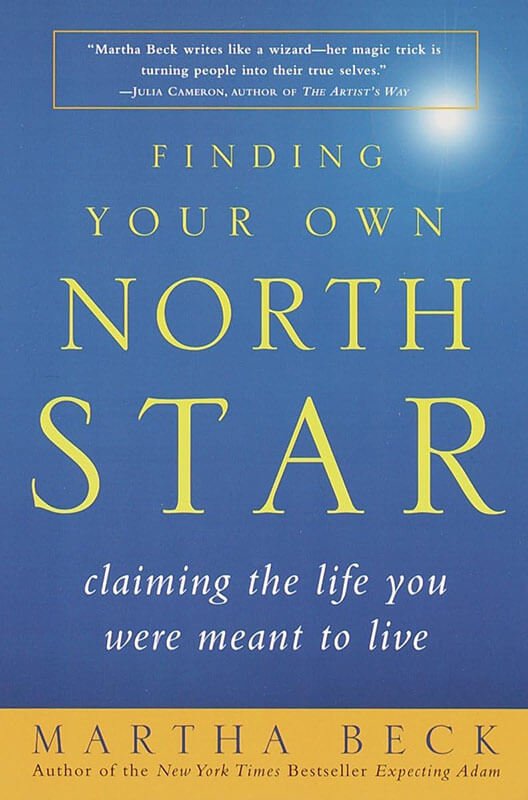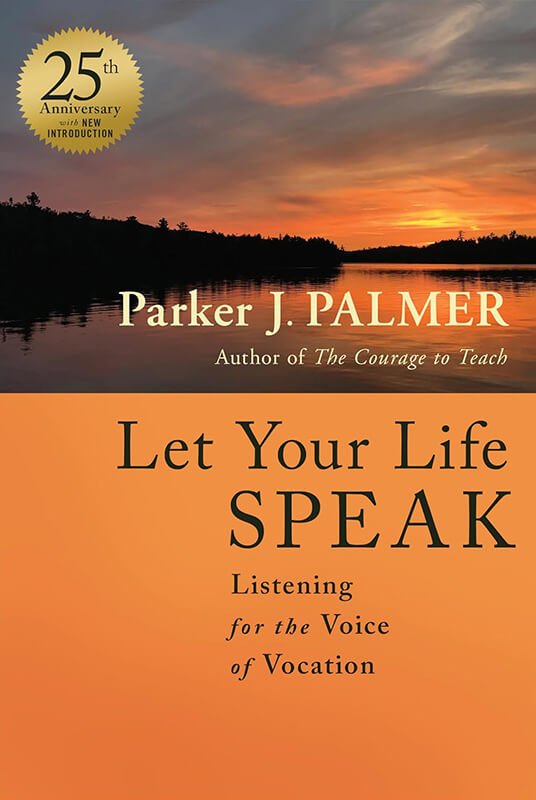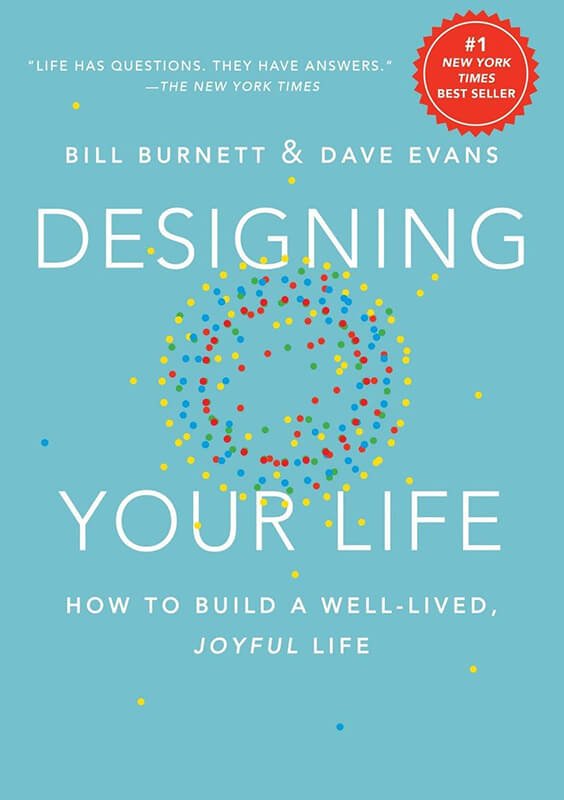First published in 1980 and updated through multiple editions, William Bridges‘ “Transitions: Making Sense of Life’s Changes” has become a cornerstone text for understanding personal change. The book’s core premise is revolutionary yet simple: the outcome of change depends less on the change itself and more on how we navigate the psychological transition process that accompanies it.
Whether facing career shifts, relationship changes, or personal transformations, Bridges provides a framework that helps readers understand and navigate these pivotal life moments.
Core Concepts
Bridges organizes his transition framework around several key principles that work together to create a comprehensive approach to personal transformation:
- The Three Phases of Transition: Endings, Neutral Zone, and New Beginnings – These distinct stages form the backbone of any successful transition, each requiring specific attention and work
- The Distinction Between Change and Transition – Change is external and situational, while transition is the internal psychological process of adapting to change
- The Importance of Honoring Endings – Understanding that every transition begins with an ending and requires a genuine farewell to old patterns
- The Creative Power of the Neutral Zone – Recognizing this uncomfortable middle phase as a period of gestation where innovation and reinvention become possible
- The Process of Making New Beginnings – Learning to identify and nurture emerging opportunities while developing new patterns of behavior
- The Cyclical Nature of Transitions – Understanding that life transitions often overlap and repeat, creating opportunities for deeper growth and learning
Chapter-by-Chapter Review
Chapter 1: The Need for Change
Bridges introduces the crucial distinction between change (external) and internal adjustment, laying the groundwork for understanding personal transformation. He explores why people often resist change, highlighting how discomfort arises not from change itself, but from misunderstanding the psychological process.
Chapter 2: Being in Transition
This chapter examines the experience of being in the midst of a shift, when old routines have ended but new patterns haven’t yet emerged. Bridges provides insight into the emotional turbulence of this phase, emphasizing patience, self-awareness, and reflection as tools for coping and adaptation.
Chapter 3: A Lifetime of Transitions
Bridges frames personal growth as an ongoing aspect of human life rather than isolated events. He demonstrates how major life changes—graduations, career shifts, family changes—fit into a broader continuum, encouraging readers to view each phase as an opportunity for growth rather than an obstacle.
Chapter 4: Relationships and Transition
Here, Bridges explores how shifts affect our connections with others. Whether in family, friendships, or romantic partnerships, he highlights the need for communication, empathy, and support. The chapter underscores that personal changes often ripple outward, influencing those around us.
Chapter 5: Transitions in the Work Life
Bridges applies his framework to career and professional life, examining how organizational changes intersect with personal growth. He offers practical strategies for maintaining engagement, productivity, and morale, emphasizing that successfully navigating workplace change requires both internal adjustment and external action.
Chapter 6: The Transition Process Itself
In the this chapter, he delves into the mechanics of the transformation journey, through three key stages: Endings, The Neutral Zone, and New Beginnings. Bridges provides detailed guidance on recognizing where one is in the process, offering practical tools for managing uncertainty, letting go, and preparing for what comes next.
Chapter 7: Endings
Bridges emphasizes that all transitions start with letting go. He introduces the concept of the “inner scoreboard,” explaining how we track personal success and failure during endings. Offering concrete strategies for closing chapters with intention and grace, reducing resistance and emotional turbulence.
Chapter 8: The Neutral Zone
Readers learn to embrace this liminal space where the old has ended but the new is not yet fully formed. Bridges presents this phase as a creative and reflective period, encouraging journaling, meditation, and experimentation to discover new insights and possibilities.
Chapter 9: You Finish with a New Beginning
In the final chapter, he guides readers toward recognizing and nurturing new beginnings. Bridges outlines the four P’s—Purpose, Picture, Plan, and Part to play—as a framework for translating possibility into reality. This section emphasizes optimism, clarity, and actionable steps to fully inhabit the next chapter of life.
Key Strengths
- Clear, comprehensive framework for understanding transition
- Rich with relatable examples and case studies
- Practical exercises for each phase of transition
- Balanced blend of psychological insight and practical guidance
- Applicable to all types of life changes
Potential Drawbacks
- Some concepts may require deep self-reflection
- Process can seem slow for those seeking quick solutions
- May feel theoretical at times
Who This Book Is For
This book is particularly valuable for:
- Individuals experiencing major life changes
- Professionals in career transitions
- Those feeling stuck between life phases
- Anyone supporting others through transitions
Final Review
“Transitions: Making Sense of Life’s Changes” offers profound insights into the nature of personal change that can transform how readers experience life’s inevitable transitions. Bridges’ framework provides a compassionate and practical approach to navigation change, acknowledging both the challenges and opportunities inherent in transitional periods.
While the process he describes requires patience and self-reflection, the potential for personal growth and transformation makes this investment worthwhile. Bridges’ an experienced consultant and counselor shares practical examples and exercises that make abstract concepts actionable. Whether you’re facing a career change, relationship transition, or personal transformation, this book offers both comfort and guidance for the journey.
Rating: 4.6/5
A masterful guide that transforms our understanding of life transitions and provides practical tools for navigating change.

Alternative Books

“Finding Your Own North Star” by Martha Beck
Insights into navigating personal transformation and finding direction.
Rating: 4.6/5

“Let Your Life Speak” by Parker J. Palmer
Explores the inner journey of finding authentic life direction through transitions.
Rating: 4.2/5

“Designing Your Life” by Bill Burnett and Dave Evans
Design-thinking approach to navigating life changes and creating meaningful change.
Rating: 4.3/5





